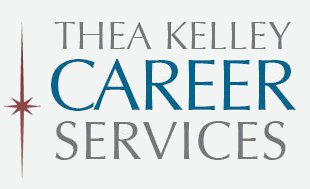 Before you answer the first question in your job interview, you have already told the interviewer how you feel about yourself and the opportunity. You’ve told them whether you understand their world – whether you “get it.” They read that message instantly from how you dressed for the interview.
Before you answer the first question in your job interview, you have already told the interviewer how you feel about yourself and the opportunity. You’ve told them whether you understand their world – whether you “get it.” They read that message instantly from how you dressed for the interview.
Since interview attire tends to be conservative, the ideal interview outfit really hasn’t changed that much in recent years.
Nor has the way people judge each other. In fact, the latter hasn’t changed that much in…millennia.
Superficial judgments are about instinct and survival.
Over thousands of years, human beings have evolved to make snap judgments. Our hunter-gatherer ancestors faced life-and-death struggles routinely. Those who could quickly size up an adversary or a competitor survived and reproduced.
We still make those instant judgments, based on body language and appearance. It may not be the most enlightened thing to do, but it’s really hard to stop it, because most of the time we don’t even notice we’re doing it.
If that doesn’t seem fair, you’re right. And if you dislike business clothes and prefer to do the bare minimum to play the game, believe me, I sympathize. Personally, I feel better in jeans than in a suit. Nevertheless, those who play the game well, win. Besides, knowing you’re perfectly attired can give a big boost to your confidence.
So, here’s how to dress for interview success.
There’s a simple rule of thumb: interview attire should be a step up from the way you would dress on the job. Let’s see what that looks like.
- If the workplace is casual (let’s say, the jeans and T-shirts of Silicon Valley software engineers), dress “business casual” for the interview. Please note, business casual is not what most of us would call casual. For men, business casual means slacks with a crease, a shirt that isn’t a t-shirt–for example, an open collared dress shirt with no tie, or even a polo shirt for the most casual offices–and maybe a blazer. For women, it’s similar except you have the option of replacing the slacks with a skirt (ideally, no shorter than knee-length). Both men and women should wear closed-toe, non-athletic shoes.
- If business casual is the standard daily attire (as in many offices today), then you’ll look smart wearing a suit to the interview. Gray and navy blue are the most widely recommended suit colors, with a white or subtly coordinating shirt and closed toe dress shoes. In this respect, the photo above is a great example, but I suggest avoiding pink as it can seem unassertive. Men, wear a tie.
- If you’ll be wearing a suit on the job, then clearly that’s what you’ll be wearing to the interview!
When in doubt, ask the recruiter or other company representative who scheduled the interview.
Accessories count.
It’s best to carry only one item, typically a briefcase or portfolio to hold your resumes, notepad and so on. Carrying both a briefcase and a purse may give a disorganized impression, so put your personal items in a small purse that will fit inside your briefcase.
Groom yourself for success.
When it comes to hair, neat and tidy is the main thing. If your hair is long, pulling it back or up may be the best way to ensure it looks businesslike. (Again, the photo I used to illustrate this article is not a perfect interview look!) For women, light or subtle makeup is ideal. For men, a clean-shaven look is best, although a conservative, close-trimmed beard and/or mustache is more acceptable than it was ten years ago.
Both sexes should avoid using any scented personal care products, especially perfumes and colognes, since many people have unpleasant physical reactions to these.
Hygiene must be flawless, of course. Avoid strong-smelling foods, coffee and alcohol, which can leave unwelcome smells. If you smoke, do everything you can to prevent tobacco smell from being noticeable on your clothes, hair, hands or breath.
Make sure your fingernails are clean and well trimmed. Avoid extremes: very long nails may give an impression of impracticality.
What about tattoos and piercings (other than women’s pierced ears)?
Opinions on these are gradually changing–which means that there are still many hiring managers and recruiters who will be put off by them. The safest strategy is to remove your piercings and cover up your tats with clothing, or with makeup products such as DermaBlend that are designed to hide them.
What about self-expression in interview attire?
To express your personality while still radiating impeccable professionalism is not always easy. If expressing personality means a man wearing a slightly more colorful tie or a woman sporting subtly ethnic earrings, that’s unlikely to make or break the interview, and if it boosts your confidence it may actually help. But if it means wearing anything that’s startling or eccentric, then I’d advise you to hold off on it. Maybe after you get the job and have established relationships you can loosen up, but at the interview, professionalism is paramount.
Of course, this varies somewhat according to the occupation and industry. In creative fields like advertising, apparel and tech, it’s appropriate to look trend-conscious. In conservative fields like law or insurance, better to keep your appearance low-key.
Can you dress more casually at second and subsequent interviews?
Unless the recruiter or interviewer suggests you dress more casually, you’re better off continuing to follow the guidelines above.
Men: If you wore a suit to the first interview, wearing the same suit again shouldn’t raise any eyebrows. Wear a different tie.
Women: I suggest wearing a second suit for the second interview. (It’s not fair that we’re judged differently than men, but we are.) For a third interview, unless you’re interviewing for a very high-paying job, it will probably look fine to go back to the first suit, but with a different blouse.
Keep your eyes on the prize.
Appearance has more power than we think. Employers have to make an important decision about you without really knowing you. The less information they have, the more important each detail becomes.
Interview attire is a big factor in the impression you make.

